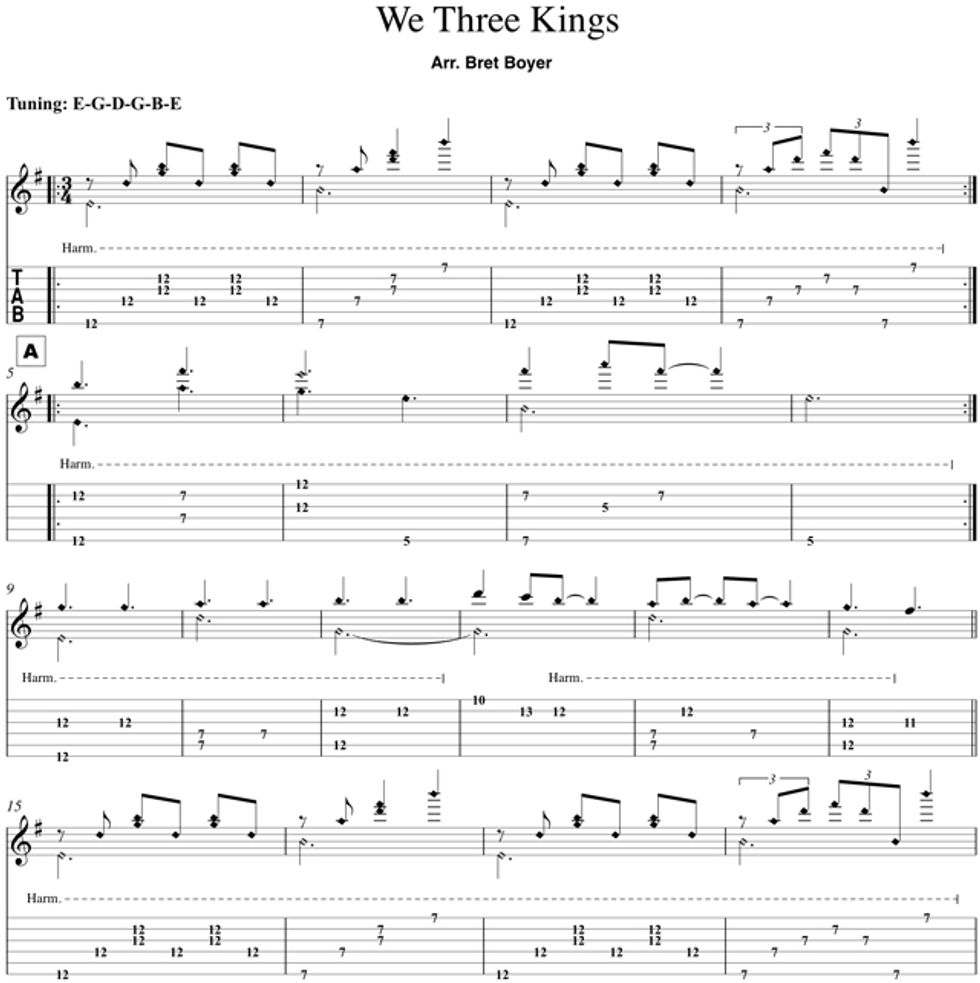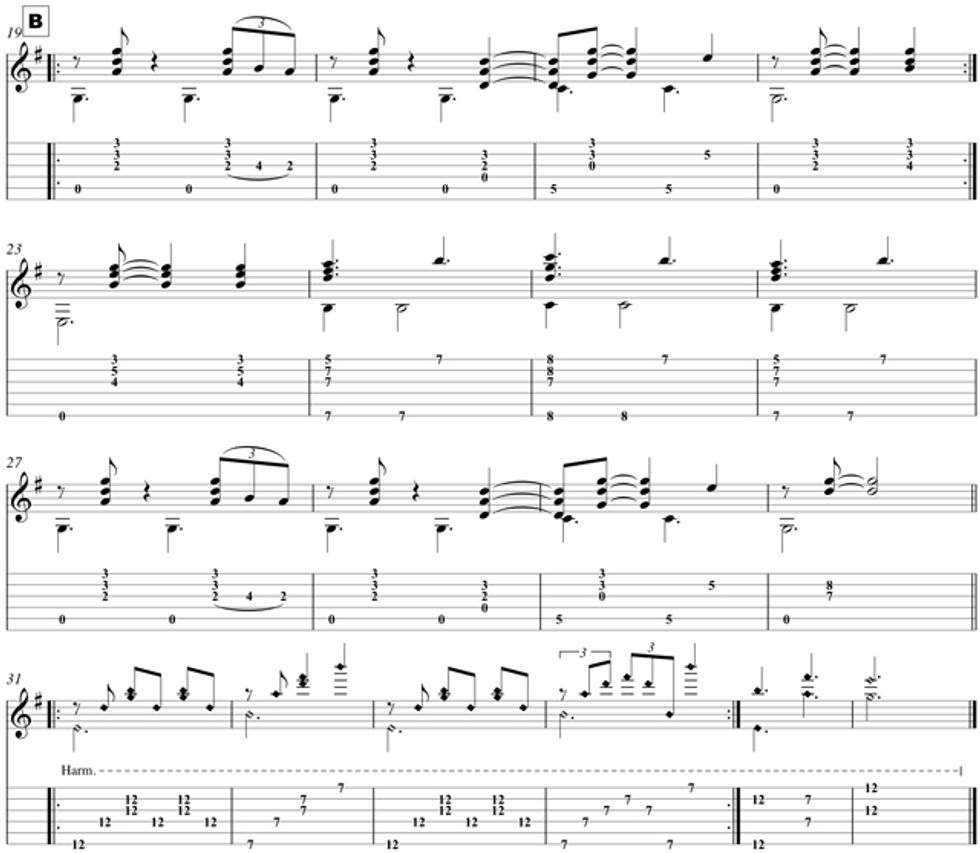Theory: Beginner
Lesson Overview:
• Create melodies using natural harmonics.
• Explore the nuances of open Em7 tuning (E–G–D–G–B–E).
• Develop a jazz-waltz feel.
Click here to download PDF notation and an audio MP3 of this arrangement.
The vamp that first appears over the first four measures is played entirely with harmonics at the 7th and 12th frets. The purpose of the vamp is to set up the feel of the arrangement and to help divide the A and B sections. I play the 7th-fret harmonics with my first finger. The 12th-fret harmonics I play with my second finger. I seem to be able to get a bigger tone and less buzz by using my second finger. Use what works best for you. I’m lightly touching the strings, but not lifting my finger while I play the harmonics.
The A section is also played almost entirely with harmonics. In order to bring out the melody, play with confidence and pluck the melody notes slightly harder than the other strings. In measures 12 and 14, we combine both harmonics and fretted notes. In order to make the notes sound more uniform, you can play the natural notes on the top of the fret so that you’re slightly muting the note with your fingertip. It’s a little tricky, but fun to try. I’ve left quite a bit of space in the A section for the harmonics to ring, so you really need to internalize the groove to make it swing.
The B section has a little emotional lift—like you’ve crossed a tightrope and made it to the other side. You may need to hold back the volume a little to help match the A section. I play a hammer-on and pull-off triplet with my pinky in measures 19 and 27 that helps to push the song forward. In measure 30 (the last measure of the B section), the move up the neck is designed to get you back into position for the vamp at the end.
 Bret Boyer
Bret BoyerBased in Austin, Texas, Bret Boyer has been an active teacher and performer for more than 20 years. He has been a faculty member at several colleges and for the National Guitar Workshop. His most recent recordings include Songs for Everyone and Hidden Constellation. bretboyer.com





















![Rig Rundown: Russian Circles’ Mike Sullivan [2025]](https://www.premierguitar.com/media-library/youtube.jpg?id=62303631&width=1245&height=700&quality=70&coordinates=0%2C0%2C0%2C0)






